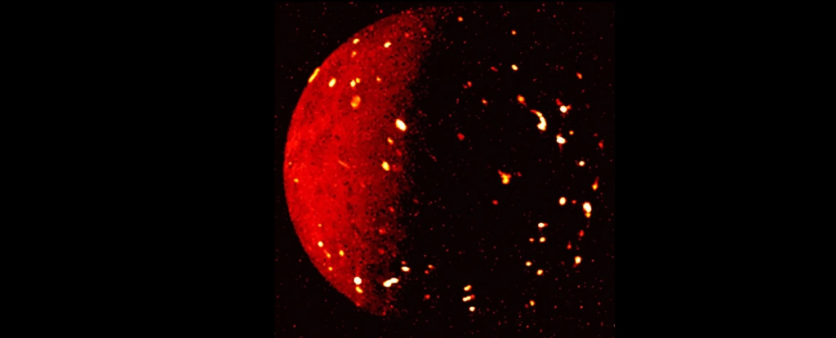NASA's mission to Jupiter has revealed a wealth of information about the moons Ganymede and Europa and is now focusing on Io, a sister moon.
The space agency's Juno spacecraft took an infrared image of Io that made it appear like a burning scarlet moon from 50,000 miles (80,000 kilometers away).

The image was captured last July 5 and was released on Wednesday. It features striking outlines of lava flows and lakes as seen in its fiery spots.
But now, NASA's Juno mission is set to photograph more views from the Jovian moon Io on Dec. 15 in line with its ongoing investigation of the planet's inner moons.
Juno's Extended Mission
The solar-powered spacecraft, which is currently in its second year of an extended mission, has already made close flybys of Europa and Ganymede.
Recently, several publications based on Ganymede's flyby on June 7 last year were published in the Geophysical Research Letters and Journal of Geophysical Research.
They comprise conclusions drawn from data collected during the flyby regarding the moon's surface makeup, ionosphere, interior, and interaction with Jupiter's magnetosphere.
One of the early conclusions from Juno's flyby of Europa on September 9 is the first 3D measurements of the ice shell. The Microwave Radiometer (MWR) on board Juno gave the mission's investigation of the Jovian moons the third dimension during the flybys.
It offered a stunning glimpse beneath Europa's and Ganymede's water-ice crust to gather information on its composition, temperature, and purity as far as around 15 miles (24 kilometers) below the surface.
The surface of Ganymede is characterized by a mixture of older dark terrain, fresher bright terrain, craters, as well as linear structures that may be related to tectonic activity, according to visible-light imagery taken by the spacecraft's JunoCam and by earlier missions to Jupiter.
Juno's Principal Investigator Scott Bolton said they discovered that the distinctions between these diverse terrain types go beyond the surface level when they coupled the MWR data with the surface photos.
Bolton adds that the young, bright landscape looks colder than dark terrain, with the city-sized impact crater Tros being the coldest area examined.
Preliminary Analysis
The science team's preliminary analysis indicates that Ganymede's conductive ice layer may have an average thickness of at least 30 miles, with the possibility that the ice may be noticeably thicker in some areas.
Juno's Magnetic Field (MAG) and Jovian Auroral Distributions Experiment (JADE) instruments captured data during the spacecraft's June 2021 close approach to Ganymede. It presented proof that the magnetic field links between Jupiter and Ganymede were disintegrating and reforming.
The ultraviolet spectrograph on Juno has noticed similar events with the moon's ultraviolet auroral emissions, which are grouped into two ovals that surround Ganymede (UVS).
The Juno team will continue to focus on Jupiter's moon Io, the solar system's most volcanic region, for the next 18 months, according to NASA.
Related Article : Astrophotographer Captures a 'Ridiculously Detailed' Image of Jupiter Made of 600,000 Shots!

ⓒ 2025 TECHTIMES.com All rights reserved. Do not reproduce without permission.




